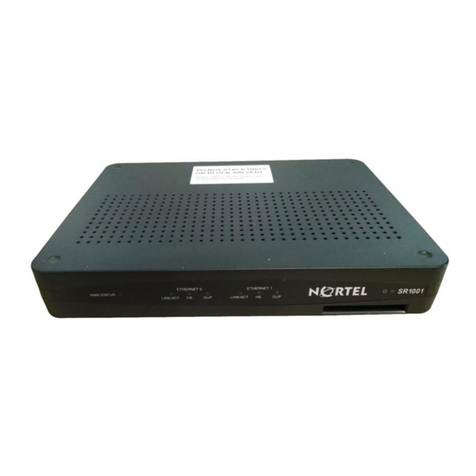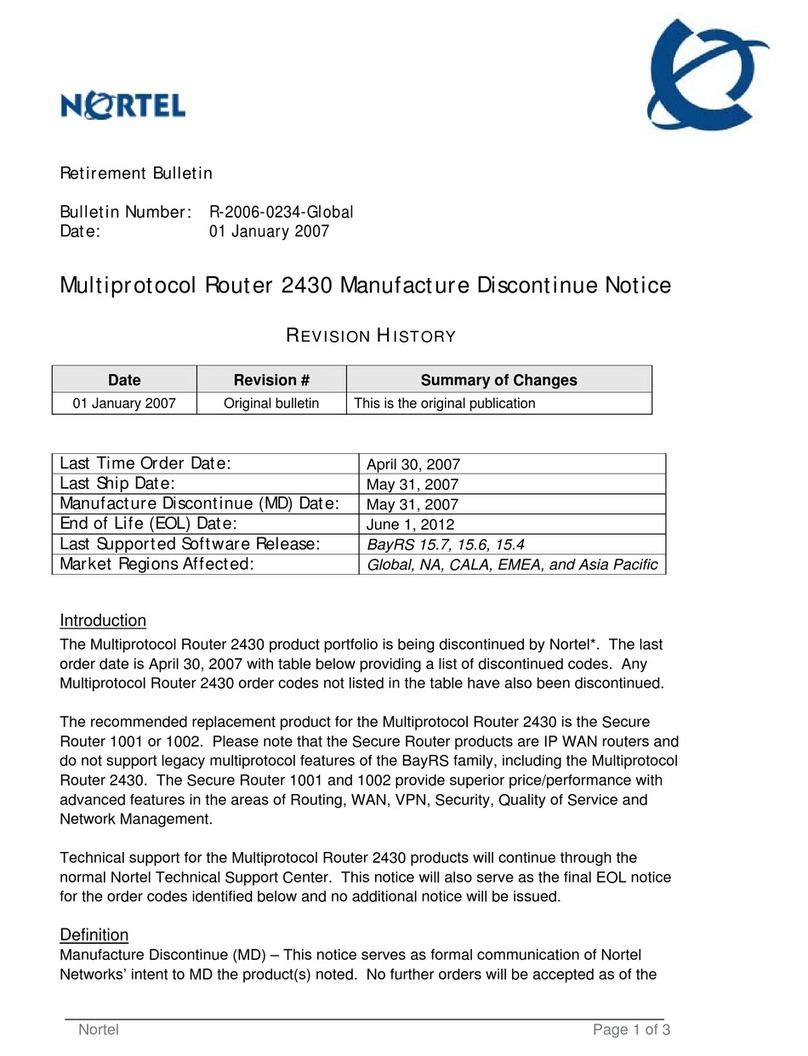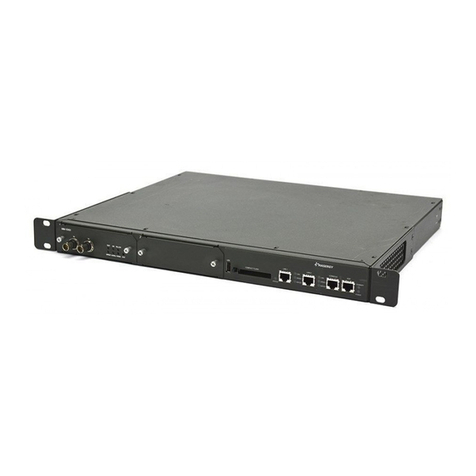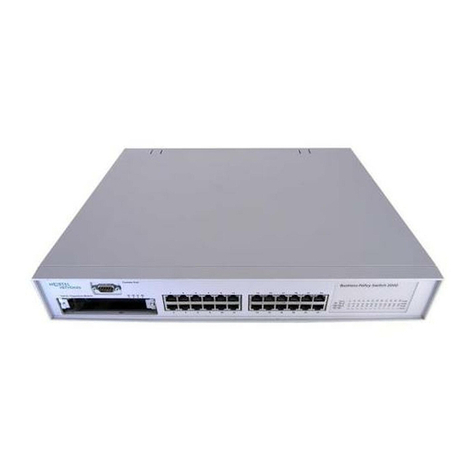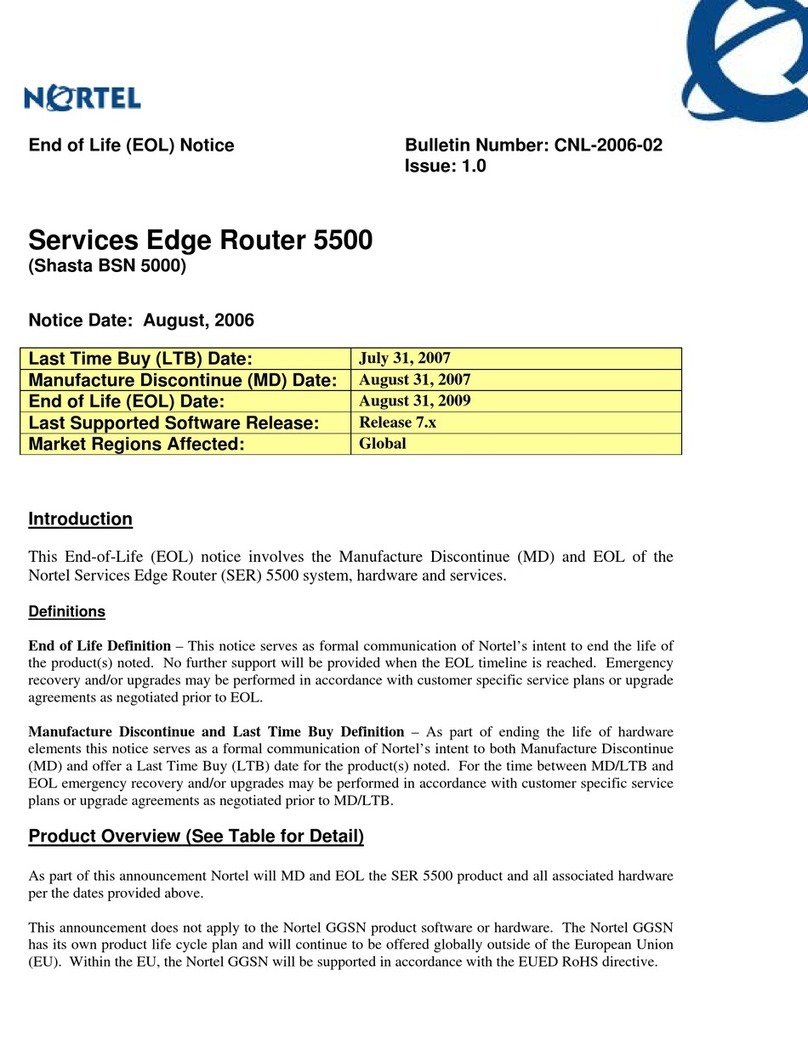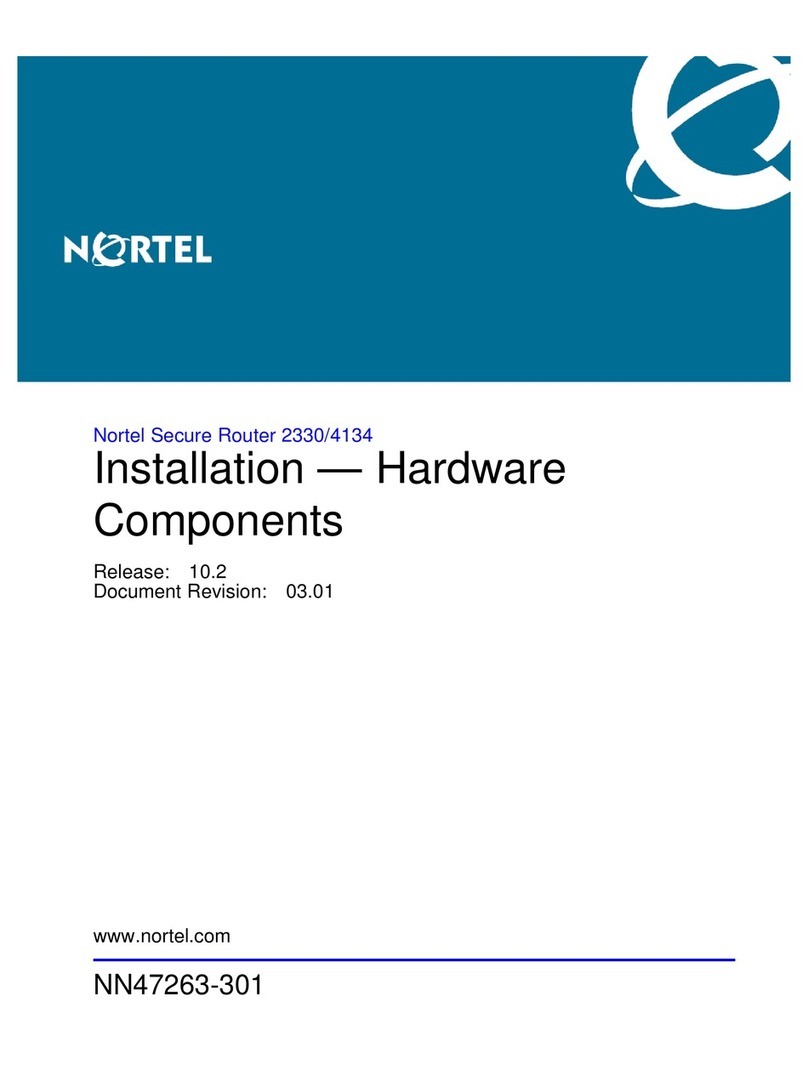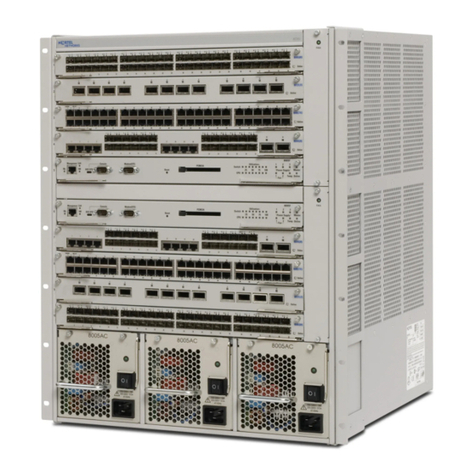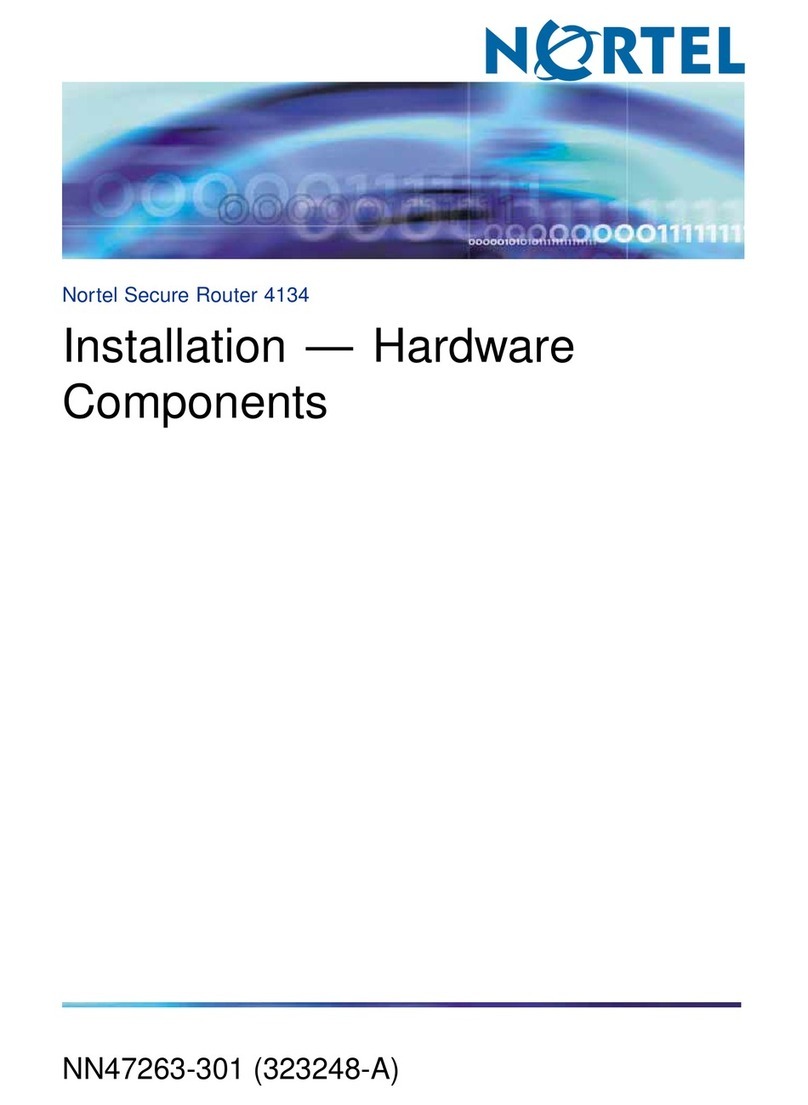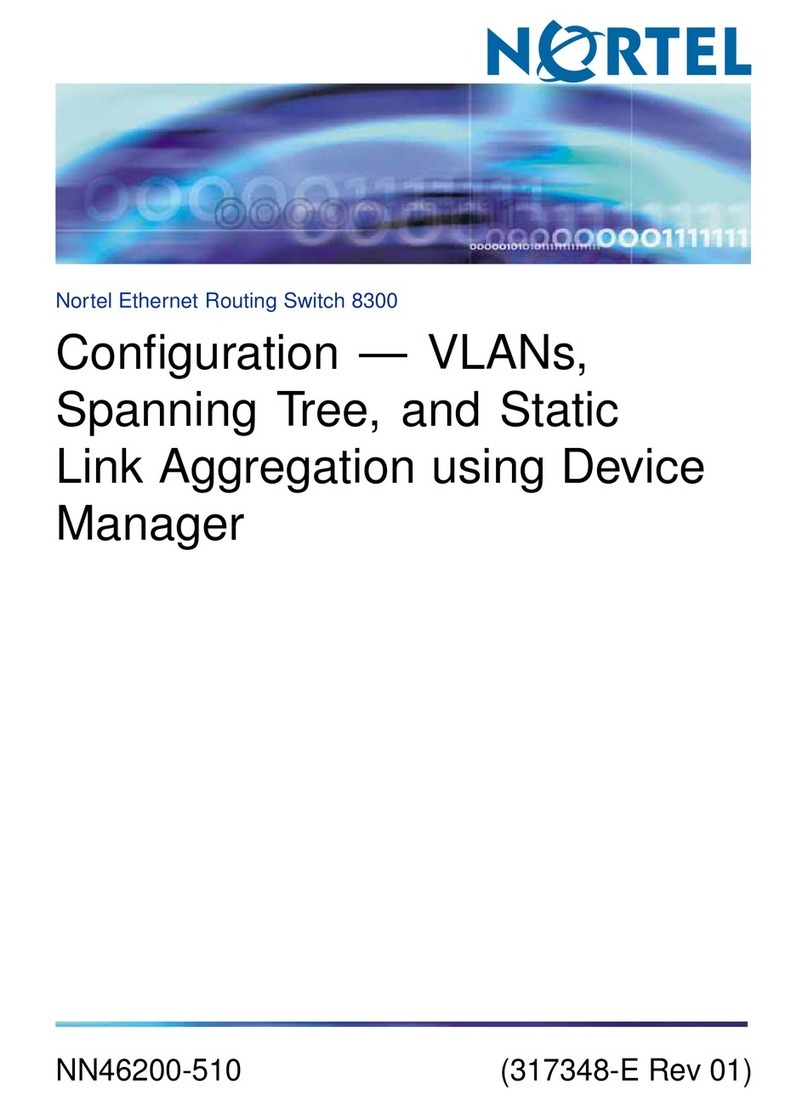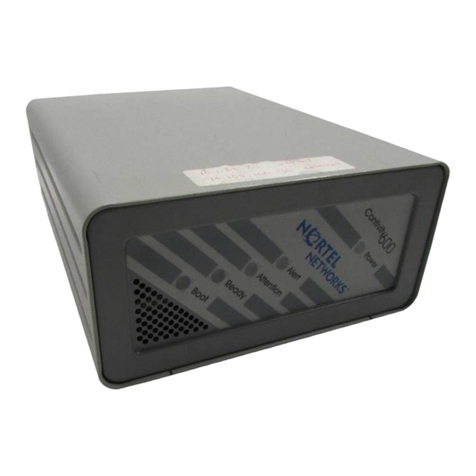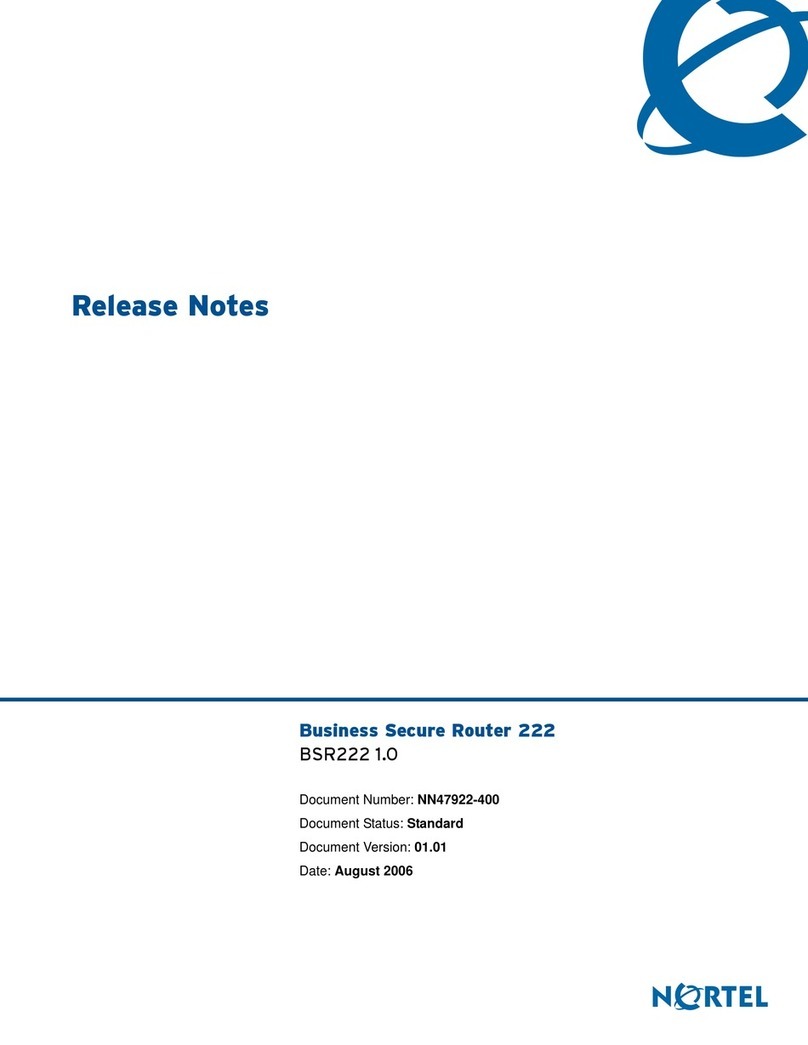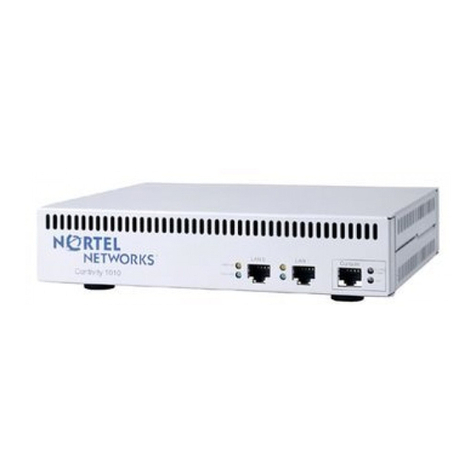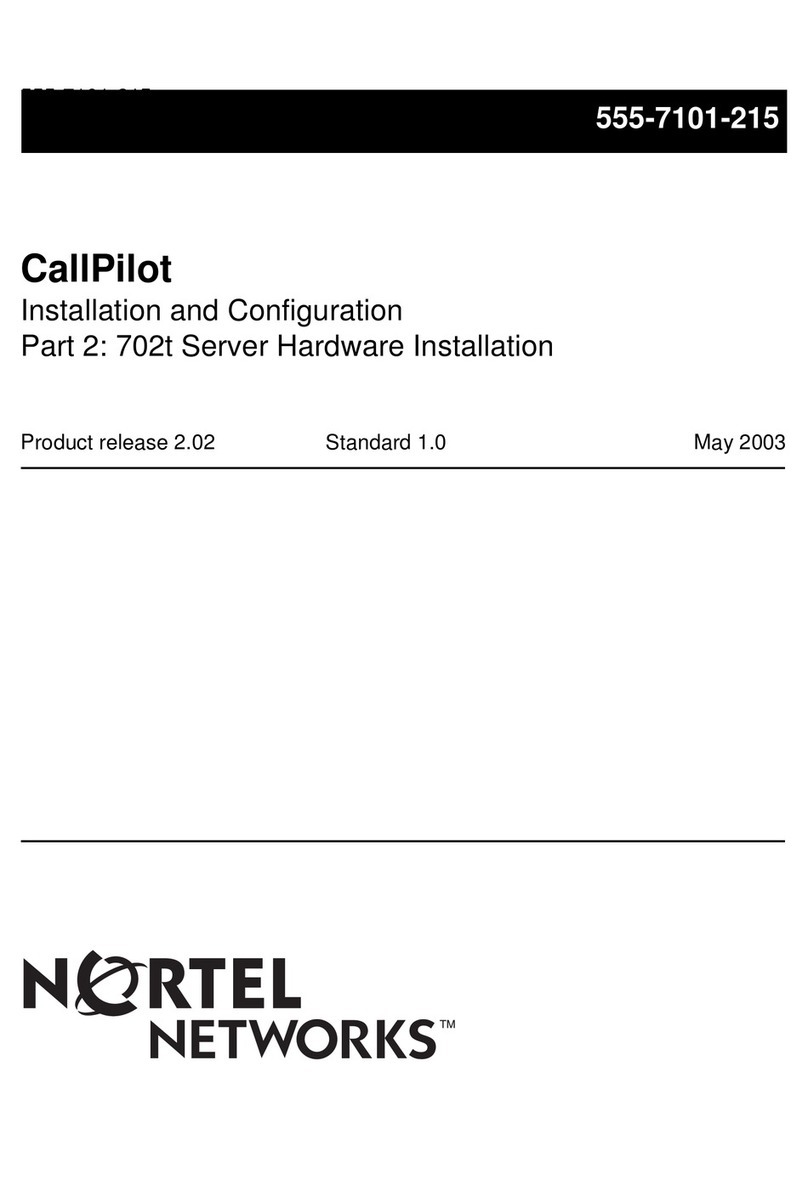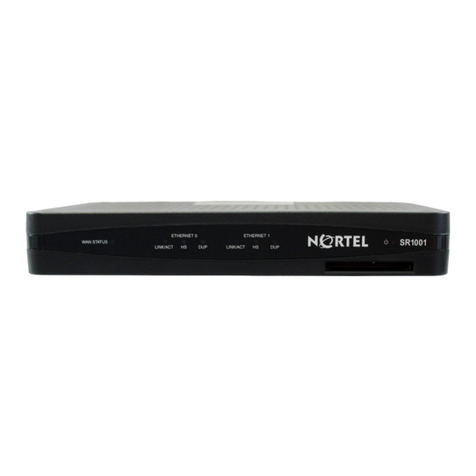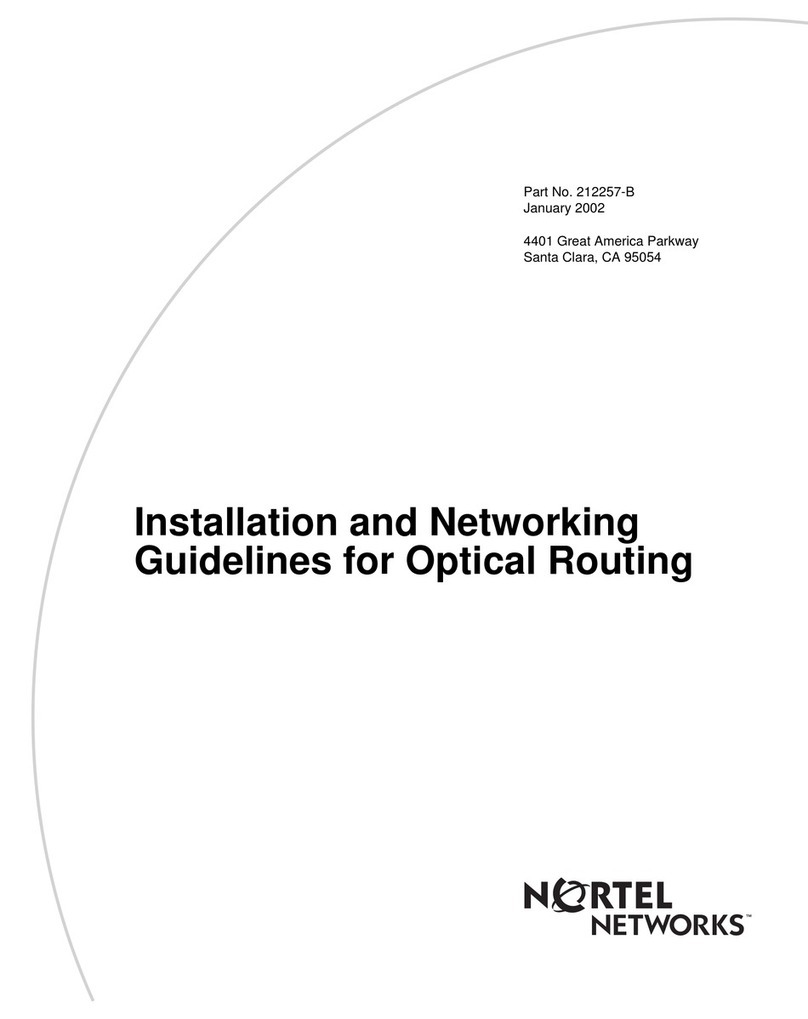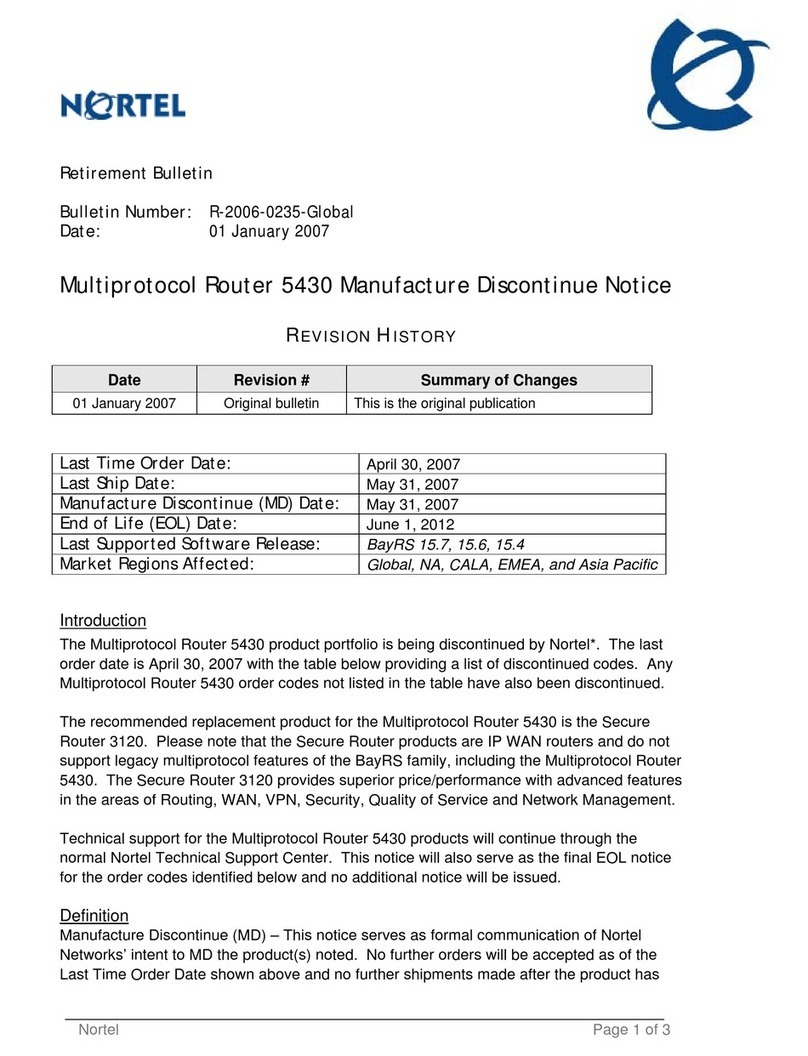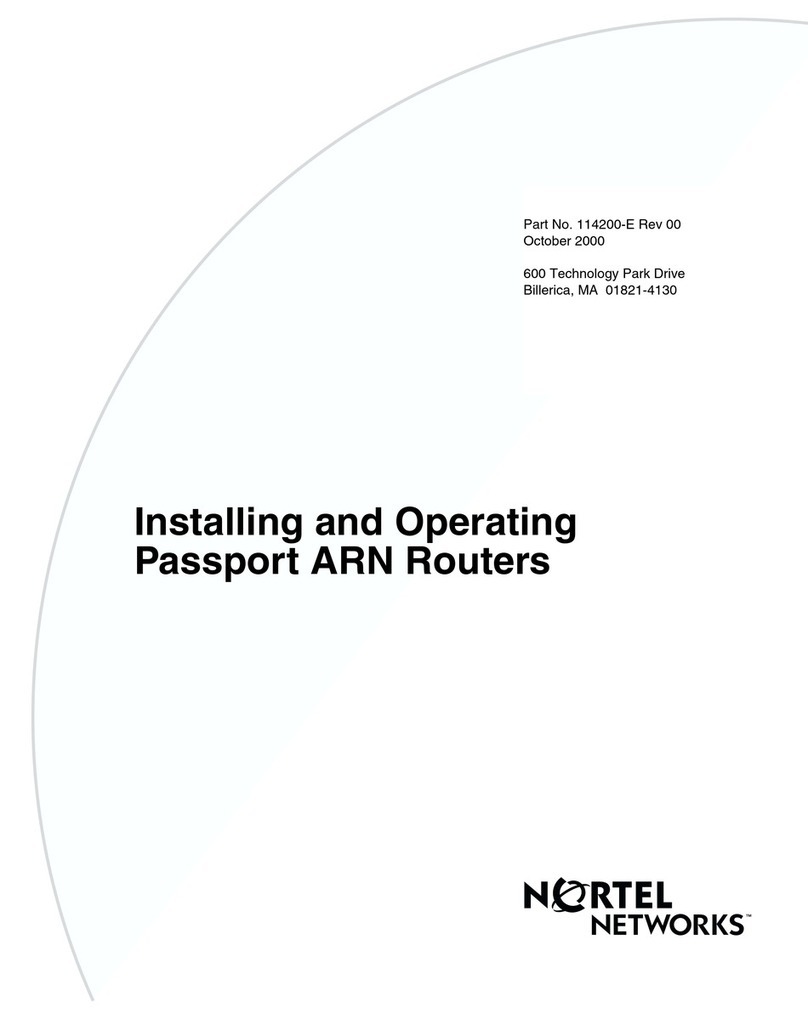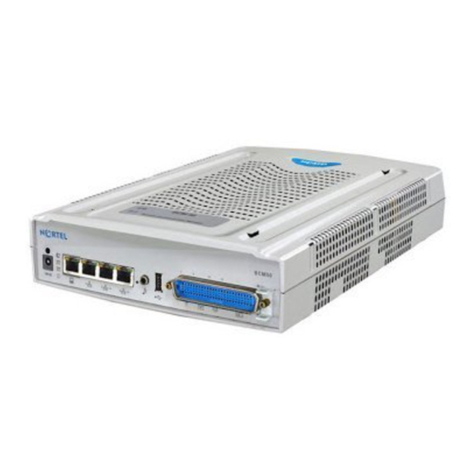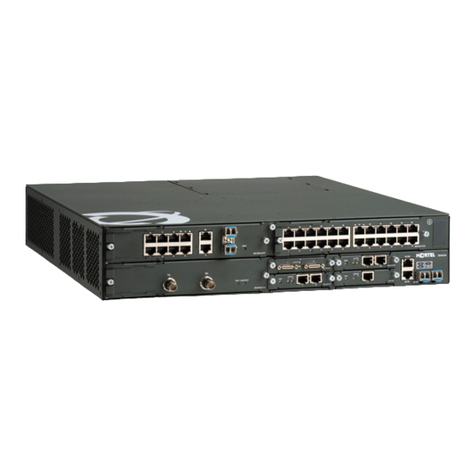6
Fault management and resolution
With Optivity Network Management System
(NMS), the network manager has quick
access to the information required to manage
and isolate all BayStack 460 networks
events. Tools such as Physical Topology
View inform the network manager how a
particular event is affecting the physical
connectivity within the network. End Node
Locate provides the ability to locate a failing
end node and, with one mouse click, have
access to the RMON statistics for the
failing Ethernet port supporting that end
node. These solutions provide visual and
statistical tools necessary to quickly resolve
any network event or to manage perform-
ance in real-time. The BayStack 460 will
be supported in NMS version 10.1 (future
release). In the meantime, there will be an
OIT (Optivity Integration Toolkit) file for
the BayStack 460 which can be used with
NMS 10.0.
Quality of Service
Quality of Service (QoS) is becoming
increasingly necessary as more of an organi-
zation’s critical business runs over the
network infrastructure. When you implement
the BayStack 460 Switch QoS features in
your network, you can utilize bandwidth
more efficiently, optimizing your existing
network resources and capabilities. If the
network is congested or down, if sales
people cannot submit orders, if e-mail and
intranet traffic threatens online Web transac-
tions, or if new applications like voice and
video fail, your business could be negatively
impacted.
By classifying, prioritizing, policing, and
marking LAN traffic, networks can offer reli-
able connectivity and required bandwidth
for mission-critical applications like VoIP
to specific groups and users, as well as to
individual devices.
For each of these applications, advanced
QoS features support Internet Engineering
Task Force (IETF) standard DiffServ QoS
architecture, packet classification based on
the contents of packet header fields (voice,
video, data), traffic policing, and remote
sniffing. As a result, optimal network
performance and reliability may be attained
while realizing significant cost savings.
Customized service type and flow-based
administrations through traffic shaping and
policing may also be established, providing
an opportunity for customer-specific service
offerings, which can be implemented to
address-specific and unique customer
requirements.
Queuing function
The BayStack 460 Switch provides network
availability for mission-critical applications,
devices, and users. This is done by classifying,
prioritizing, and marking LAN IP traffic
using up to eight hardware-based IP service
class queues (on the Gigabit uplink ports)
based on the following parameters:
•ToS/DSCP marking
•IP source address/destination address
or subnets
•TCP/UDP source/destination port/
port range
•802.1p priority bits
•Ingress source port
•IP protocol ID (e.g. TCP, UDP, IGMP)
•EtherType (e.g. IP, IPX)
•VLAN ID
It also has the ability to read packets that
have been marked from other devices such
as the Passport 8600 Switch. Also, weighted
round-robin prevents normal priority traffic
from being starved by expedited traffic (on
a per-packet basis).
Quality of Service and
policy management
QoS provides the ability to read, alter,
prioritize, and tag or mark IP traffic
based upon information imbedded in
Type of Service (ToS). Based on the IETF
Committee’s industry standards, the
BayStack 460 Switch provides the ability to
prioritize traffic based upon the required
level of service for a given transaction. This
level of service can be marked in the embed-
ded information inside each IP packet’s ToS
field. DiffServ is based upon ToS field.
The BayStack 460 Switch has application-
specific integrated circuits (ASICs) to
enable DiffServ Code points can be
mapped to 802.1p.
The QoS policies can be configured via the
BayStack 460 Switch built-in Web-based
management tools to facilitate QoS;
alternatively, Optivity Policy Services can be
utilized for dynamic end-to-end enterprise-
wide policy and QoS management, which is
facilitated through the Common Open
Policy Support (COPS) protocol (future
software release).
Quality of Service provisioning
With Optivity Policy Services (OPS), policies
can be created through a simple intuitive
drag and drop workflow. OPS is the Policy
Decision Point in a DiffServ QoS implemen-
tation. Using OPS, common policies can be
created one time and simultaneously imple-
mented across many BayStack 460 Switches
through a single command instead of hours
of filter configuration. Policies are easily
managed and updated in the OPS GUI.
•Simple intuitive policy creation
•Re-use filter common filter sets
•Network-wide view of policies currently
being enforced
